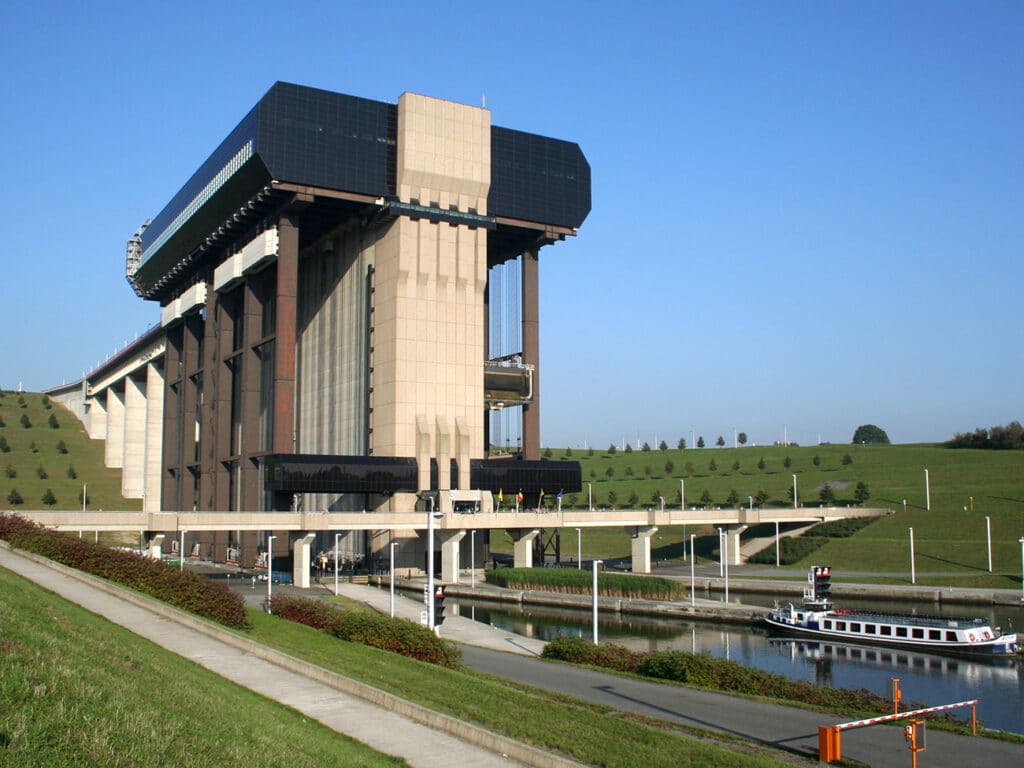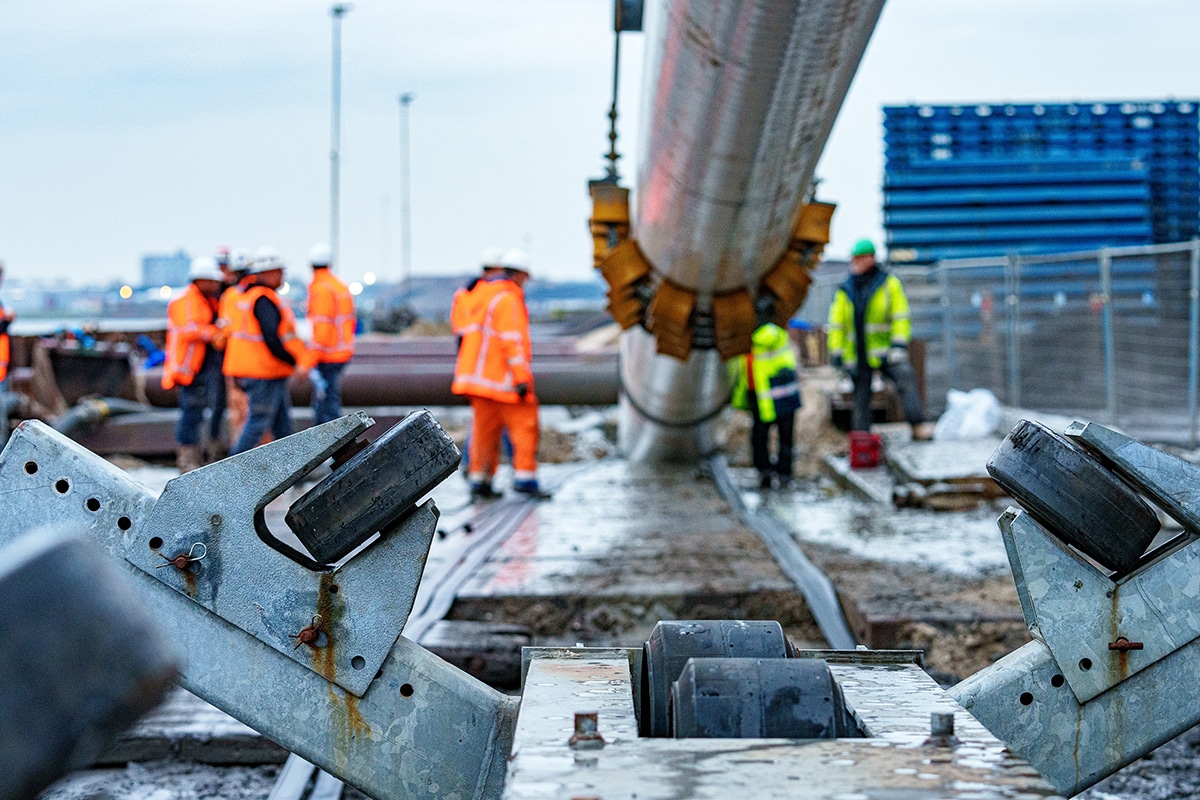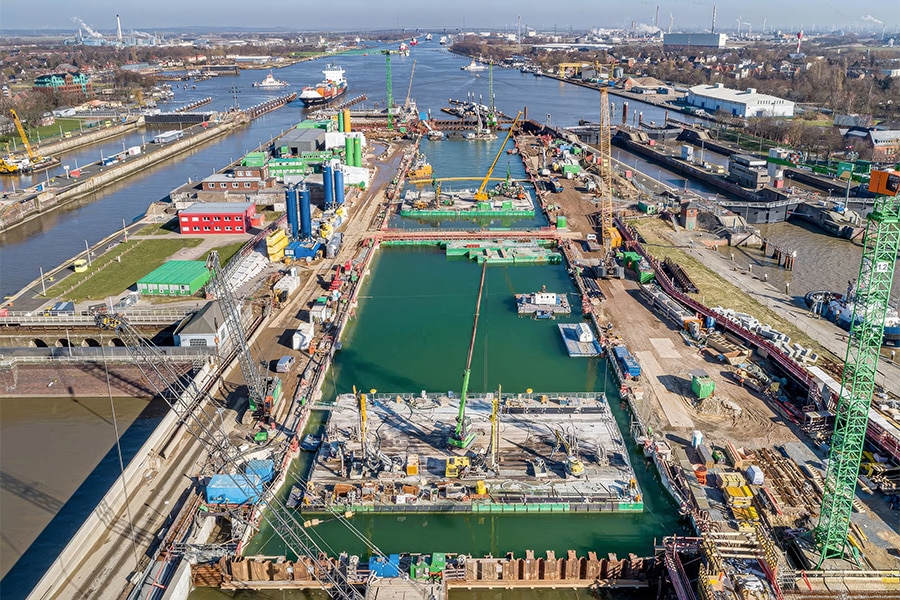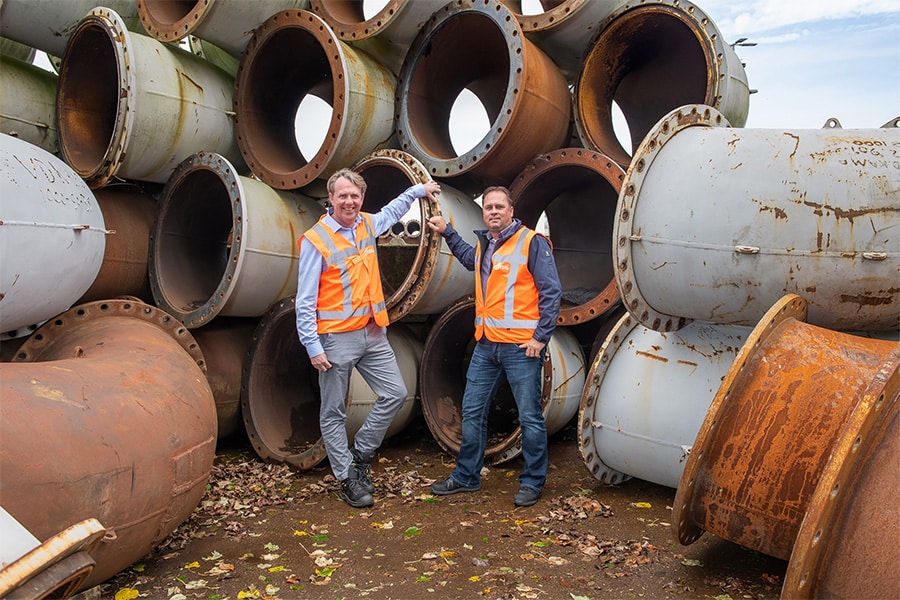
Trelleborg designs and manufactures seals for large hydraulic projects
With the very largest hydraulic engineering projects in our country (think locks and flood defenses, for example), it is obvious that we look primarily at the work that is voluminous. Yet there is important work being done that is hidden from our view.
Like waterproofing various parts. Not visible, but vital. Ridderkerk-based Trelleborg is a true expertise company that is active all over the world in waterproofing architectural structures. Just recently, the company obtained the order to supply the seals for the Fehmarnbelt "immersed tunnel," which at 18 kilometers in length will be the longest combined car/rail tunnel in the world. Trelleborg is also 'in the house' with construction consortia in the Netherlands. An interview with Trelleborg employees Bob Rijnders, Sales manager water management, Emal
Kamal, design engineer and Arend van Hattum, field service supervisor.
The project's invisible friend
"That's how you could describe us," Bob laughs. "Our seals may not be in the picture, but if they weren't there, it would just be a wet mess. Our seals find their way into various parts on major projects, such as, for example, as joint strips in dilatations between concrete floors, seals for sliders and lock gates."
As a design engineer, Emal sits down with clients early on. "As early as the first design phase, we get to give advice. Initially we support the engineers. After getting to know each other better, we receive emails on a daily basis from the designers of a project with various questions about how to seal a certain construction, what specifications the seals should meet, what the characteristics of the seals are, what the life expectancy is, how to attach them to the construction et cetera. At agreed times, we then go to them for a day to support and advise the engineers in multiple disciplines."

Different situations require different seals
"There are various compression seals from Trelleborg in the structures, for example, they are incorporated in sliding systems, between floors, walls and in movable structures," Emal explains. "They meet all the sealing requirements specific to such projects. We often make customized seals, such as, for example, dampers that must dampen relatively high-frequency loads from the deadweight of valves, during water outflow and act as secondary seals."
The internal and external water stops that Trelleborg recommends in various projects are incorporated into the structures in situ. Arend explains, "Depending on the situation or requirements to be sealed, the compression profiles end up in specific locations. Our water stops are embedded between the joints of the concrete to be poured. The self-activating lip seals are incorporated in locks, for example, around the full circumference of point doors. Sometimes in a tunnel construction, other times on a particular level slide or water barrier, very diverse, simply where it is needed in the construction."
What do the seals have to meet technically?
Bob: "Seals must meet a certain (allowed) leakage rate and requirements are set for life expectancy, disassembly, spring characteristics, rubber hardness, geometry, resistance to certain environmental conditions and the ability to perform repair and replacement on portions of the seal."
Arend adds, "Furthermore, we supply our Omega profiles a lot, with corresponding clamping systems, along with the W9CUi profiles. Before we start work, we check the condition of the surface, so that we can be sure that we can guarantee a good seal. Installation itself is usually done by the client, however, with our supervision."




